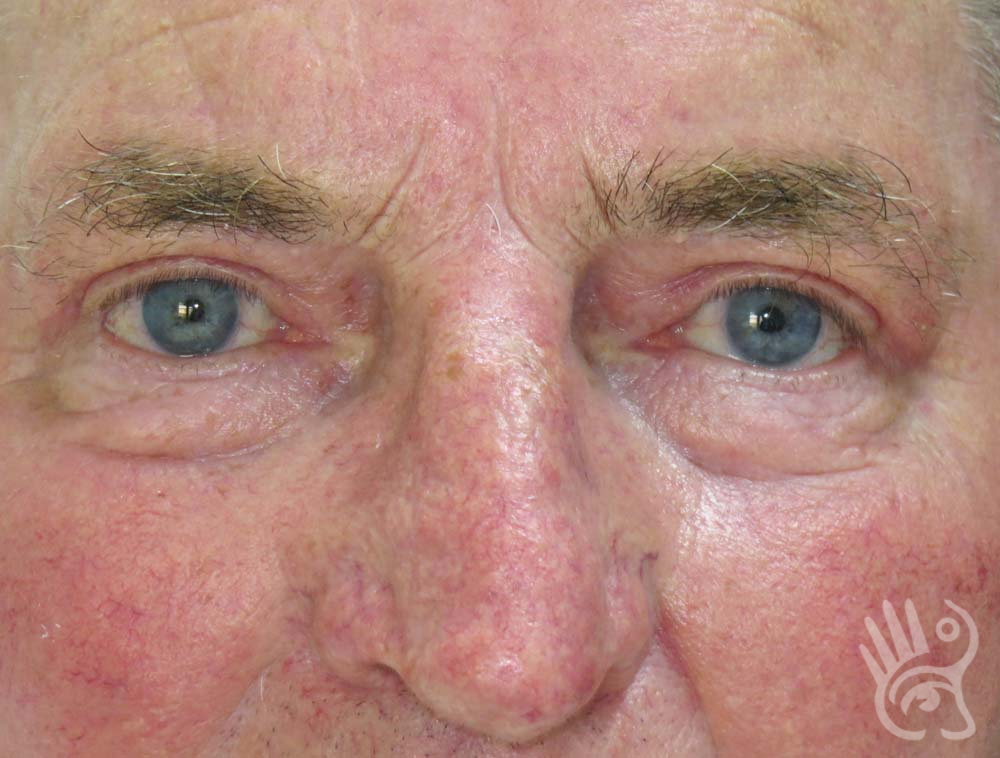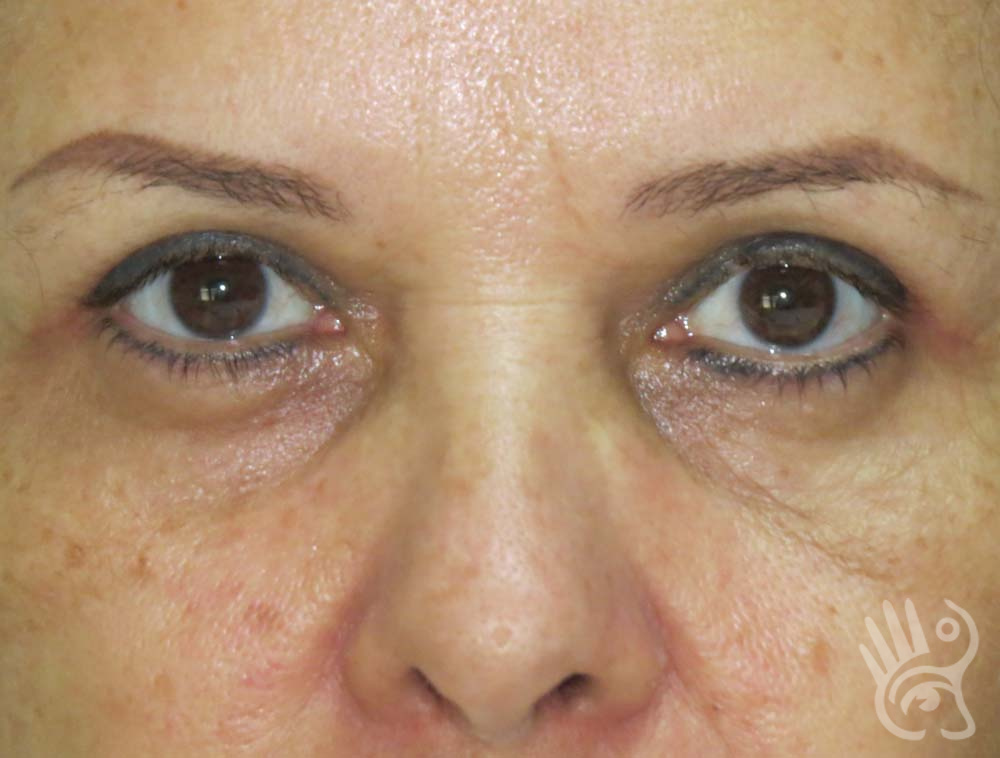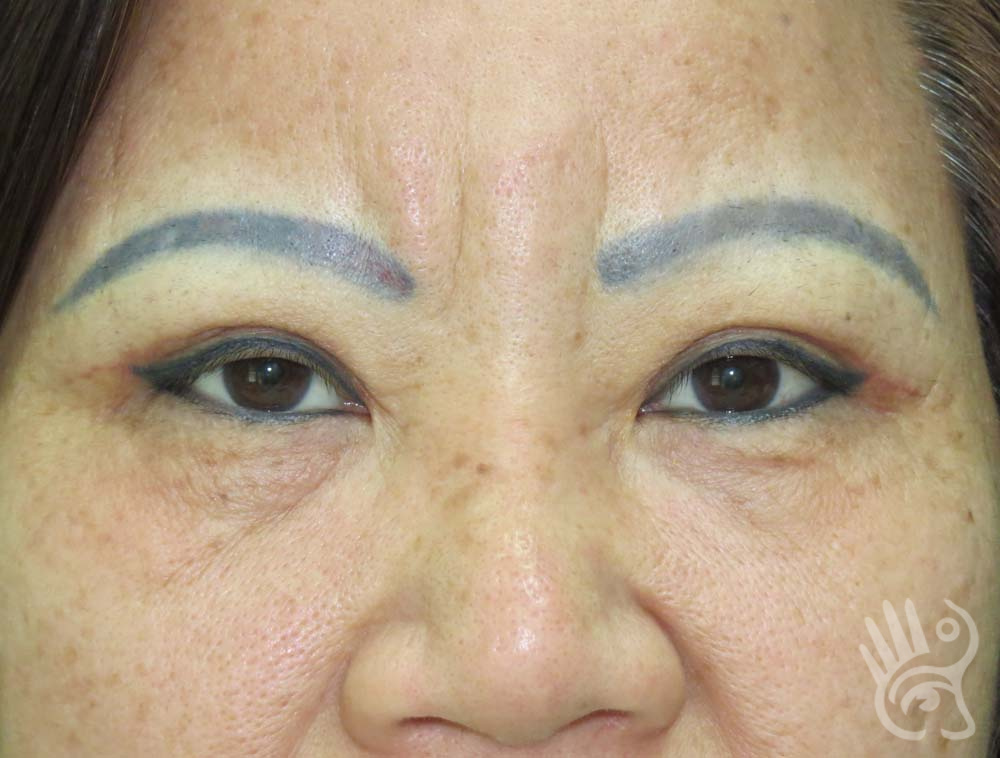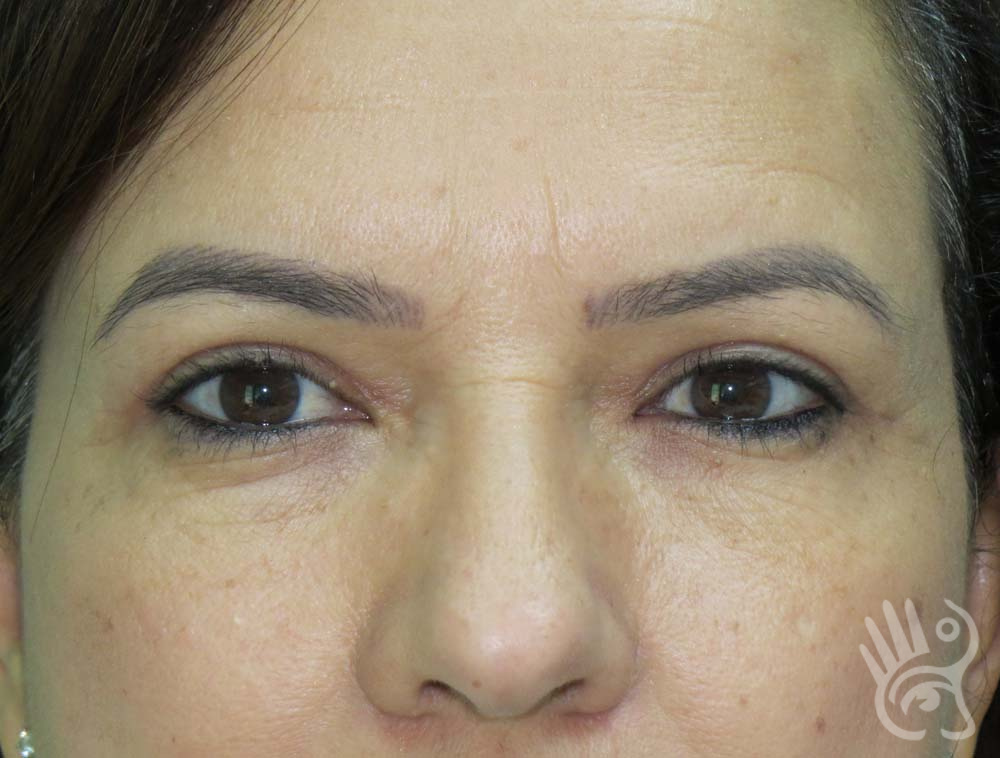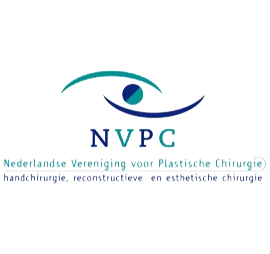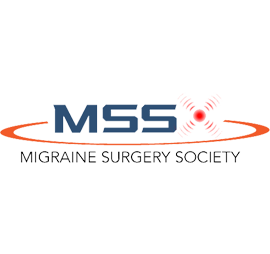With aging the skin of the upper eyelid can become droopy, which is referred to as “blepharochalasis”. When the skin touches the eyelashes or hangs over them the field of vision will become impaired. This excess skin also will give an aged and tired appearance. This can be aggravated by descent of the forehead and eyebrows. Furthermore, orbital fat may protrude forward creating bulges above the eyelid. An upper eyelid correction is referred to as a “blepharoplasty” and can be performed at the same time as a lower eyelid correction.

